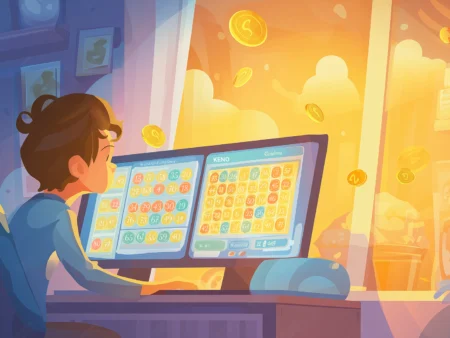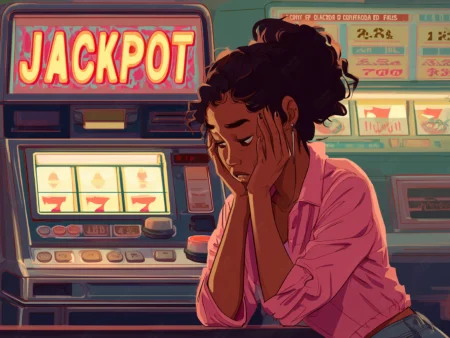You’ve seen it: that player glued to the same slot for an hour, muttering “It’s due to hit.” Maybe you’ve been that player, chasing a bonus, convinced the next spin is the one.
Here’s the truth: it isn’t.
Slot machines aren’t watching your losses. They don’t care how long you’ve played. And there’s no pattern hiding in the reels. What is behind every spin? Math, precise, probability-driven, and built to give the house a long-term edge.
But knowing that doesn’t mean you’re powerless.
If you understand how slot machine odds actually work, the math, the probability models, and yes, how slots are programmed, you can start making smarter choices. Not gimmicks. Not guesswork. Just hard-won insights from years inside the industry.
Let’s break down what’s really happening under the hood, and how to turn that knowledge into your edge.
Table of contents
What Are Slot Machine Odds, Really?
When players talk about slot machine odds, they’re often thinking short-term. “How likely am I to win on the next spin?” But that’s not how it works.
Slot odds aren’t about the next spin, they’re about the long-term mathematical return the machine is programmed to deliver. There’s no pattern to time, no “due” payout, and no invisible switch waiting to flip in your favor.
Every spin is determined by a Random Number Generator (RNG), a microchip-powered algorithm that constantly spits out outcomes, thousands of times per second. It doesn’t remember that you’ve lost 20 spins in a row. It doesn’t reward max bets. It’s not plotting a comeback or setting you up for a dry spell. It’s just doing math.
And that math? It’s built into the game’s code, a blend of probability models, symbol weighting, and payout tables. There are no spinning reels behind the scenes, no hot/cold cycles, and definitely no “win timer.” Just a digital brain running 24/7 on pure odds.
How Slot Probability Works
Here’s a way to picture it:
Imagine flipping a 10 000-sided coin.
- 9 900 sides = nothing
- 90 sides = small win
- 9 sides = bonus round
- 1 side = jackpot
Every time you hit spin, you’re rolling that 10 000-sided die. The outcome is random and independent, just like the last one, and the next one.
This is slot probability in action. The odds don’t shift based on previous results. There’s no memory, no build-up, no “cycle” resetting.
Even the game’s RTP (Return to Player), say 96%, only makes sense over millions of spins. It’s not a promise that you’ll get €/$ 96 back for every €/$ 100 today. It’s a statistical projection over the lifespan of the machine.
That’s why chasing “due” payouts is a fast track to a drained bankroll. There’s no correction coming. The only thing increasing with every spin is your exposure to variance, the natural swings that come with random outcomes.
Key Takeaway
Slot odds aren’t about when you win, they’re about how often, over time, the machine is programmed to let you win.
Know the game, know the numbers, and play with purpose, not emotion.
How Slots Are Programmed to Pay (or Not)
Every modern slot, whether it’s spinning on your phone or lighting up a Vegas floor, runs on a mathematical blueprint. It’s not just flashing lights and lucky charms. That blueprint dictates how often a slot pays out, how much it pays, and how wild or steady the ride feels. That’s the core of how slots are programmed.
Under the hood, every slot runs a payout engine built around three key variables:
- RTP (Return to Player): The theoretical percentage a slot pays back over millions of spins.
- Volatility: How frequent or extreme those payouts are, small, steady wins vs big, rare hits.
- Hit Rate: The chance of hitting any win per spin, even if it’s a micro payout.
Game studios, like Play’n GO, Pragmatic, Nolimit City, fine-tune these values during development. Before any slot goes live, it’s run through millions (or billions) of test spins by third-party labs like iTech Labs or eCOGRA to verify fairness and compliance with local regulations.
So while each spin is randomly generated, the overall behavior of the slot is meticulously coded. It’s engineered variance, not chaos.
What Is Slot Game Math?
Let’s break down how that math plays out.
If a slot lists a 96% RTP, it means the machine is designed to return €/$ 96 for every €/$ 100 wagered, in theory, over millions of spins. That doesn’t mean you’ll personally see a 96% return. One player might hit a 5 000x bonus on spin 12. Another might burn through their balance without a single feature.
Now enter volatility, the rhythm of the game.
- Low-volatility slots: Frequent, smaller wins. Great for bonus wagering or longer sessions.
- High-volatility slots: Rare, explosive wins. Big risk, big upside. Think Dead or Alive II or Money Train 4.
It’s like comparing a steady dividend stock to a moonshot crypto coin.
Here’s what most players miss: Two slots can have the same RTP but feel completely different. One might feed you frequent €/$ 0.80 wins on a €/$ 1 bet. Another might go 100 dead spins, then drop a 500x monster.
Want to know the difference between RTP and volatility? We break it down clearly in our guide, because understanding that combo is key to finding the right game for your style.
Bottom line: You can’t change the math, but you can learn to play with it, and that’s where smart players separate from the pack.
What You Can Do With This Knowledge
So now you know: slots are pure math wrapped in flashing lights. You can’t predict outcomes, force wins, or outsmart the RNG. But you’re far from powerless.
Smart players use this knowledge to skip the traps, protect their bankroll, and pick games that fit their goals. It’s not about luck, it’s about using the math to your advantage.
Here’s how.
Look for High RTP Slots
If you’re playing hundreds, or thousands, of spins, RTP matters. A 96.5% game will return more over time than one at 91%. It’s not flashy, but the gap is real. Over enough spins, that 5% difference means fewer losses and longer playtime, especially for grinders and bonus hunters.
The catch? Most casinos don’t highlight RTP. And many offer multiple RTP versions of the same slot (yes, really). Operators can choose whether you see the 96% version or the budget 88% one. Most players have no idea this even happens.
That’s why smart players do their homework.
Explore casinos with the best odds to win, we’ve curated sites that actually give you a statistical edge.
Understand Your Risk Appetite (Volatility Strategy)
RTP sets your long-term expectation. Volatility defines the experience.
- Low-volatility games = frequent, smaller wins.
Perfect for casual players or slow sessions. - High-volatility games = rare hits, but massive upside.
Ideal if you’re chasing adrenaline or life-changing bonuses.
If you’re on a tight bankroll, go for low to medium volatility. These games keep the session going with fewer punishing dry spells. But if you’re ready for a grind and chasing a 1 000x payout? Go high-vol. Games like Dead or Alive II, Money Train 4, and San Quentin live in that space.
There’s no “correct” choice, just the one that fits your mindset and your money.
Avoid Chasing Patterns or “Slot Systems”
Let’s be blunt: there’s no system that beats the RNG.
- The 5-spin rule? Entertainment, not edge.
- The $20 method? Still gambling under the same odds.
- Watching for “near hits”? Total illusion.
Every spin is random. The machine doesn’t track your bet size. It doesn’t know you’ve been loyal for 200 spins. It’s not “due.”
These myths stick because we’re wired to spot patterns, even when none exist. And that’s how bad info drains good bankrolls.
Check out common slot myths players still fall for, and stop handing your money to superstition.
Knowing the truth won’t make the reels kinder, but it’ll make you smarter, and that’s how you win over time.
Bonus Tip, How to Spot Better Slot Setups at Online Casinos
Here’s a move most casual players never see coming: casinos don’t program the slots, but they do make decisions that directly impact your odds.
Game providers like NetEnt, Play’n GO, and Pragmatic Play build the slot mechanics, including the math. But many of their titles come in multiple RTP versions. A slot might be available in 96.5%, 94%, or even 88% RTP variants. And yes, casinos get to choose which version you play.
So that “96%” slot you read about in a review? It might quietly be running at 92% where you’re playing, with zero visual difference. Same symbols. Same music. Just worse value.
That’s why smart players stick to casinos that don’t play games with the numbers.
Look for operators that:
- Disclose RTP info clearly in the game description
- Offer demo mode, so you can test volatility without risk
- Let you filter by RTP or variance (some do, and it’s gold)
- Avoid vague claims like “up to 98% RTP” with no real transparency
At Go Spin Casino, we recommend brands that prioritize high-RTP setups and honest disclosures. These are the casinos that respect smart players, and don’t quietly cut your edge behind the scenes.
Check out our recommended casinos for real RTP transparency and better long-term value.
Because when the house edge is unavoidable, minimizing it becomes your best move.
So, Can You Beat the Slots?
Let’s be honest, slots are a game of chance. There’s no cheat code, no streak hack, no secret sequence that guarantees a payout.
But there is a way to play smarter.
When you understand how slot machine odds actually work, from RTP and volatility to how providers structure the math, you shift from blind luck to informed play. You pick games that give you a fairer shot. You avoid traps. And you stop falling for myths that drain your balance faster than any bonus round.
This isn’t about beating the system. It’s about playing the right games, setting smart expectations, and knowing when to push and when to walk away.
The edge isn’t in rigging the machine, it’s in knowing the math behind it.
Want a real edge? Start with the numbers.
Slot Machine Odds FAQs
You don’t, the game developer already has. Slot probability is built into the machine’s math, combining symbol weightings and reel layouts. What you can see is the RTP, which tells you the average return over time.
Both. Slots use RNGs (Random Number Generators) to ensure each spin is random and independent, but the overall payout behavior is programmed using RTP and volatility models.
No. The 5-spin rule is a popular myth that says you should leave a machine if it doesn’t hit in five spins. But every spin is random, past results don’t influence the next one. The rule is entertainment, not edge.
No. There’s no pattern or method to predict a win. Each spin is a separate event determined by the RNG. Any claim to the contrary is either a guess or a gimmick.
The best odds come from slots with a high RTP, typically 96% and up. Games like Mega Joker, Book of 99, or Blood Suckers are known for offering some of the most favorable long-term returns.












































